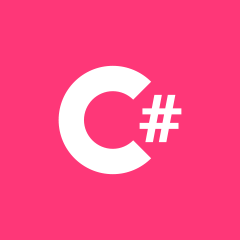冒泡 NotifyPropertyChanged
根据这个答案,我不需要担心 NotifyPropertyChanges 冒泡层次结构,但我仍然无法使用这样的(简化的测试-)结构:
数据保持类
public class TestNotifyChanged : INotifyPropertyChanged
{
public event PropertyChangedEventHandler PropertyChanged;
private string _Test = "default";
public string Test
{
get
{
return _Test;
}
set
{
if(_Test!=value)
{
_Test = value;
PropertyChanged?.Invoke(this, new PropertyChangedEventArgs("Test"));
}
}
}
}
使用该测试类和测试属性的 ViewModel:
public class ViewModel : INotifyPropertyChanged
{
public event PropertyChangedEventHandler PropertyChanged;
private TestNotifyChanged tnc = new TestNotifyChanged(); // only to init, otherwise VS screams at me
public ViewModel(TestNotifyChanged tnc)
{
tnc = tnc; // getting an instance of TestNotifyChanged from "Master" passed in, which hopefully will be replaces by a singleton class.
}
private string _Test;
public string Test
{
get
{
return tnc.Test; // this might be the crucial part!?
}
set
{
if (_Test != value) // never hits that, as I would expect, but you never know..
{
_Test = value;
PropertyChanged?.Invoke(this, new PropertyChangedEventArgs("Test")); // of course also never hit, as expected
}
}
}
}
最后是我的 MainWindow cs
public partial class MainWindow : Window
{
TestNotifyChanged tnc;
public MainWindow()
{
InitializeComponent();
tnc = new TestNotifyChanged();
DataContext = new ViewModel(tnc); // pass in my Test-Object that has the Values.
}
现在发生了什么:
默认值“default”显示在 TextBlock 中。
当我单击按钮时,消息框显示“新值”
TextBlock未更新为“新值”
我想要达到的目标:
看起来很简单:TextBlock 应该更新为“新值”
当我直接在 ViewModel 上设置测试值时,我可以轻松地完成这项工作- 但这似乎不正确,并且与我认为我可以构建我的应用程序/代码的方式相去甚远。未来的目标是拥有一个单例(我发现静态不起作用)“RecordStore”,它包含大部分数据(并从 API、本地数据库或仅从内存中获取它,如果其中任何一个完成)
所以问题是:
为什么 NotifyPropertyChange 没有冒泡到 View/ViewModel?
或者还有其他我没有看到的问题?
 不负相思意
不负相思意1回答
-

至尊宝的传说
“冒泡”是路由事件的概念。像 PropertyChanged 这样的常规事件不会“冒泡”。除了tnc = tnc;ViewModel 中的明显错误(应该是this.tnc = tnc;)之外,这两个类的 Test 属性是不相关的。为了更新自己的 Test 属性,ViewModel 必须在 处注册一个 PropertyChanged 事件处理程序tnc。并且它必须tnc在其自身的 Test 属性更改时更新该属性。public class ViewModel : INotifyPropertyChanged{ public event PropertyChangedEventHandler PropertyChanged; private TestNotifyChanged tnc; public ViewModel(TestNotifyChanged t) { tnc = t; tnc.PropertyChanged += (s, e) => { if (e.PropertyName == nameof(Test) || string.IsNullOrEmpty(e.PropertyName)) { Test = tnc.Test; // update ViewModel.Test from TestNotifyChanged.Test } }; } private string test; public string Test { get { return test; // always return own value } set { if (test != value) { test = value; PropertyChanged?.Invoke(this, new PropertyChangedEventArgs(nameof(Test))); tnc.Test = Test; // update TestNotifyChanged.Test from ViewModel.Test } } }}或者,删除 Test 属性的支持字段并仅操作tnc.Test:public class ViewModel : INotifyPropertyChanged{ public event PropertyChangedEventHandler PropertyChanged; private TestNotifyChanged tnc; public ViewModel(TestNotifyChanged t) { tnc = t; tnc.PropertyChanged += (s, e) => { if (e.PropertyName == nameof(Test) || string.IsNullOrEmpty(e.PropertyName)) { PropertyChanged?.Invoke(this, new PropertyChangedEventArgs(nameof(Test))); } }; } public string Test { get { return tnc.Test; } set { tnc.Test = Test; } }}幸运的是,这完全没有必要。相反,可能只是一个公共Tnc财产,如public class ViewModel{ public TestNotifyChanged Tnc { get; } public ViewModel(TestNotifyChanged tnc) { Tnc = tnc; }}使用这样的绑定:<TextBlock Text="{Binding Tnc.Test}"/>
 随时随地看视频慕课网APP
随时随地看视频慕课网APP
相关分类

 C#
C#